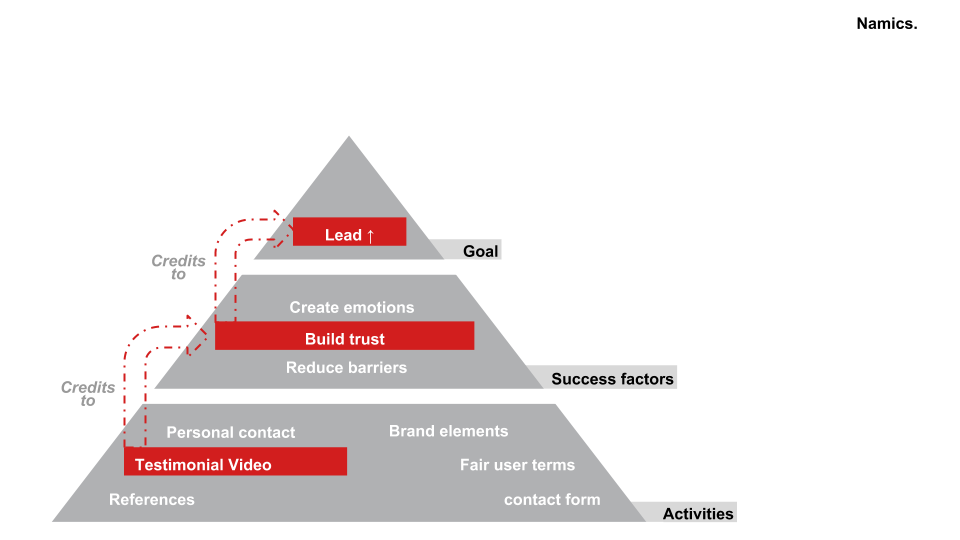Key considerations before you set up your personalization project
You’ll find a huge number of articles, blog posts and whitepapers if you search the internet for information on website personalization. Many explain either why personalization should be among your first priorities or cite statistics saying that personalization is among the top priorities for marketeers.
Finding content about successful personalization projects or how to deliver a successful personalization project is much harder. The reason might be either because companies are too busy driving their personalization projects or because there simply aren’t that many personalization projects yet. However this blog post aims to provide more information to those companies who just haven’t got started with personalizing their web services yet. It describes which basic considerations you need to take into account before you can set up your personalization project:
Defined (personalization) goals
Defined target groups
Defined customer journey
Defined technical basis
Defined data basis
You may want to remember the pre-conditions as the “5 Definitions” as they apply not just to personalization projects.
1. Defined personalization goals
First of all you should have a clear idea why you want to implement personalization. “Everybody does it” or the fear of being left behind won’t help at a later stage when it comes to brainstorming and selecting the right personalization activities on your website. Instead, consider your business goals and your strategy. What are you trying to achieve on a higher level? Subsequently break each of your goals down to your online activities considering the required success factors. An example for lead creation:

In our example the business goal “Lead generation” can only be achieved if, for example, the customer is positively emotionally engaged, finds few or no barriers and gains trust in the services of your company. Trust can be built through references, fair user terms and brand elements as well as testimonial videos. These testimonial videos might already be on your website and can be personalized e.g. by showing a specific visitor a video with a protagonist he can relate to.
For finding matching success factors it helps to study the “Elements of Value Pyramid” published last year in the Harvard Business Review visualizing the needs of your customers that you should fulfil, going from functional and emotional to life-changing and social impact.
2. Defined target groups
You need to be absolutely clear for whom you want to personalize:
Who is your most important target group?
What distinguishes your target group (characteristics, interests, objectives, motifs)?
Where do your target groups differ from each other?
This will be the basis for two different topics:
On the one hand for mapping your target groups on technical segments in your analytics and content management system (as e.g. Magnolia)
On the other hand for different components of your website e.g. in tonality, image and text. Furthermore it gives you important indications where and how personalization might be appreciated by your users.
3. Defined customer journey
The knowledge about your target groups should include the users’ behaviour during the process of information seeking and purchase. It should be detailed enough that you have information on how your users find your website and services, how they inform themselves and what influences their purchase decision. This allows you to tailor the personalization to the needs of your users at different stages and eventually guide your users from one stage to another providing the right amount of information on the channel that they use when they need it.
The following high-level example illustrates how it can be structured (per target group):

4. Defined technical basis
Eventually the practicability and hence success of your personalization considerations will be determined by budget and technique. You’re halfway there if you already use an analytics system and if it’s integrated with your CMS. The later should already have out-of-the-box personalization features just as Magnolia CMS does. The more enhanced these features are, the more sophisticated your personalization activities can be, without the need for customization (which of course is not a problem and will be required at a later stage anyway). It’s also a big bonus if the segments from your analytics system are already available in your CMS.
No matter how advanced your current analytics integration and personalization features may be, it’s important for you to know where you stand technically. It will allow you to identify and mitigate technical risks at the very beginning of the project as well as correctly assess the feasibility of the personalization activities later on.
5. Defined data basis
It is not possible to identify users that are not logged in due to restrictive data laws and technical constraints. Respectively, it is very difficult to match users to segments and hence target groups as long as they are not logged in.
Therefore you should now look at which user data is already available for logged-in and inidentifed users. It’s worth thinking about how you can enhance the user data available if only a minority or even none of your users logs into your webpage. An example that fulfills this purpose is the questionnaire that we implemented for our client Graubünden Tourism. The user can playfully create a holiday profile allowing him to see personalized recommendations which would have not been possible without the questionnaire.
Conclusion
You should be able to tick off the following points for the successful start of your personalization project:
Defined (personalization) goals
Defined target groups
Defined customer journey
Defined technical basis
Defined data basis
They form the basis and the frame for the subsequent analysis and conception phases.










